
Homeowners insurance is a vital protection for your home and belongings. It's designed to help you recover from unexpected events, like damage from a storm or theft.
Most policies cover damage to your home's structure, including the walls, roof, and foundation. This means if a tree branch falls on your house, your insurance will help pay for repairs.
Your insurance policy may also cover personal property, such as furniture, electronics, and clothing. This means if your home is burglarized, your insurance can help replace stolen items.
Keep in mind that some items, like jewelry or collectibles, may have special coverage limits or requirements.
What Homeowners Insurance Covers
Homeowners insurance covers a wide range of things, including damage to your home and its contents. The standard types of home insurance coverage include dwelling, other structures, personal property, loss of use, personal liability, and medical payments.
The dwelling coverage pays to repair or replace your home and attached structures, such as a porch, and is typically enough to rebuild your home. Other structures, like a fence or shed, are covered for up to 10% of the dwelling coverage.
Personal property coverage pays to repair or replace stolen or damaged belongings, and is usually 50% to 70% of the dwelling coverage. This includes items stored off-premises, such as in a storage unit, up to 10% of the Coverage C limit.
For your interest: Does Homeowners Insurance Cover Brick Repair
Dwelling
Dwelling coverage is a crucial part of your homeowners insurance policy, covering damage to the structure of your home, including walls, floors, windows, and roof. This type of coverage also includes built-in appliances and attached structures like garages, porches, and decks.
The Insurance Information Institute notes that most homeowners policies cover dwelling coverage for any cause of damage that isn't specifically excluded, including wind, hail, freezing, fire, and lightning. This means that if a severe thunderstorm uproots a tree that falls onto your home, crushing part of the roof and attic, your insurer will pay to repair or replace the damaged area, up to your dwelling coverage limit.
Your dwelling coverage limit is one of the most important parts of your home insurance policy, and it's essential to ensure it's enough to rebuild your home. Some policies pay out as replacement cost, meaning no depreciation is factored into the repair or replacement costs.
Broaden your view: How to Get Insurance to Cover a Slab Leak
Here are the standard types of dwelling coverage, along with the typical amounts:
In a standard policy, a dwelling coverage claim is typically designated to be paid out as replacement cost, which means that no depreciation is factored into what the insurance company pays to make the repairs or replacements. This is a key benefit of dwelling coverage, ensuring that you can rebuild or repair your home without worrying about depreciation costs.
Personal Property
Personal property coverage is a crucial part of homeowners insurance, and it's essential to understand what it covers. Most standard homeowners policies include personal property coverage, which pays to repair or replace stolen or damaged belongings. This coverage typically accounts for 50% to 70% of the dwelling coverage, so if you have a $300,000 dwelling policy, you likely have between $150,000 to $210,000 for your personal belongings.
Personal property coverage can help you pay for the value of your damaged or lost possessions, including furniture, electronics, clothing, and collectibles. Even trees, plants, and shrubs are covered in some cases. Coverage for personal items may also include items that are stored off-premises, usually up to 10% of your Coverage C limit.
A fresh viewpoint: Does Home Insurance Cover Injury
The types of events covered under personal property coverage include:
- Fire or lightning.
- Smoke.
- Windstorms and hail.
- Explosions.
- Theft.
- Vandalism.
- Weight of ice, snow, and sleet.
- Sudden damage from a power surge.
- Volcanic eruptions.
- Falling objects.
- Water overflow or discharge from household systems like plumbing, air conditioning, and appliances.
- Freezing of those same household systems.
- Sudden tearing, cracking, or bulging of a hot water, steam, air conditioning, or fire protective system.
- Riots.
- Damage from aircraft or vehicles.
It's essential to note that personal property coverage typically pays out as actual cash value, which means that your insurance company would only pay for what the original item would be worth today at depreciated values.
Types of Policies and Coverage
The two policy types most often held by homeowners nowadays are HO-3 (special form) and HO-5 (comprehensive form). HO-3 and HO-5 policies provide more expansive coverage than other types.
There are eight standard types of homeowners insurance policies, including HO-1: Basic Form, HO-2: Broad Form, HO-3: Special Form, HO-4: Contents Broad Form, HO-5: Comprehensive Form, HO-6: Unit-owners Form, HO-7: Mobile Home Form, and HO-8: Modified Coverage Form.
Here's a breakdown of the different policy types:
Other Structures
Other structures coverage is designed to protect detached structures on your property, such as sheds, fences, and garages. These structures are not attached to your house, but are still important to your property's overall value.
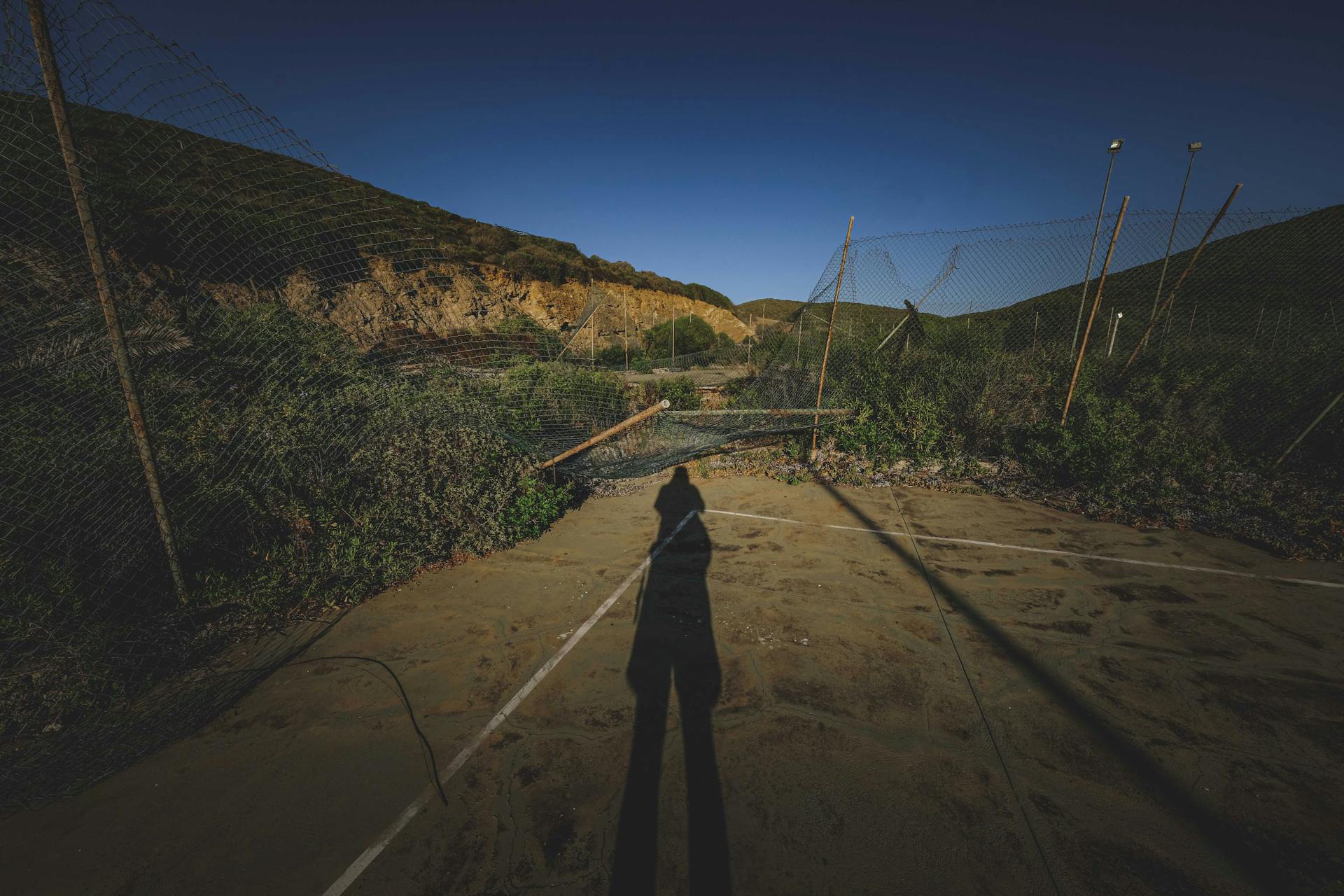
The policy limit for other structures is usually 10% of your dwelling limit. For example, if you have a policy with a $300,000 dwelling limit, you likely have $30,000 for the other detached structures on your property.
Most homeowners insurance policies cover other structures for any event that isn't specifically excluded, such as fire, wind, hail, and snow. This means you'd likely have coverage for damage or destruction of these structures due to these types of events.
If you have a fence that collapses under the weight of heavy snow, the insurance company would pay to repair it, minus your deductible. This can be a big help in unexpected situations like this.
Here are the typical amounts for other structures coverage:
This table shows the typical amounts for different types of coverage, including other structures. Keep in mind that these are just general guidelines, and your policy may have different limits or requirements.
A unique perspective: What Is Hazard Insurance on a House
HO-1 and HO-2

HO-1 and HO-2 insurance policies offer limited coverage, paying only for damage caused by events listed in the policy. This type of insurance is less popular, but it's worth considering if you're on a tight budget.
The HO-1 policy is the most basic form of homeowners insurance, covering only 10 named perils, such as fire and theft. This means that if your home is damaged by any other cause, you're not covered.
The HO-2 policy is slightly more comprehensive, covering 16 named perils, including damage from falling objects and electrical surges. However, it still has significant limitations and won't cover damage from floods, earthquakes, or other disasters.
If you're considering an HO-1 or HO-2 policy, make sure you understand what's covered and what's not. It's also essential to compare rates with other types of policies to ensure you're getting the best deal.
Here's a comparison of the two policies:
Named Peril
A named-peril homeowner's insurance policy only covers losses specifically listed on the policy.

If you're unable to prove that a loss was caused by a named peril, your claim may be denied and you won't be reimbursed. This generally applies to the personal property section of your policy.
You'll need to carefully review your policy to know exactly what perils are covered, and be prepared to provide evidence if you need to file a claim.
Take a look at this: Do I Need Condo Insurance
Replacement Cost vs. Actual Cash Value
Replacement cost vs. actual cash value is a crucial distinction in insurance policies. One key factor in your payout is whether your coverage will pay whatever it takes to rebuild your home, even if that cost is above your policy limits.
Actual cash value coverage pays the cost to repair or replace your damaged property, minus a deduction for depreciation. Most policies don’t use this method for the house, but it’s common for personal belongings.
Functional replacement cost coverage pays to fix your home with materials that are similar but possibly cheaper. For example, your contractor could replace damaged plaster walls with less expensive drywall.
A unique perspective: Lemonade Homeowners Insurance Cost

Replacement cost coverage pays to repair your home with materials of “like kind and quality,” so plaster walls can be replaced with plaster. However, the payout won’t go above your policy’s dwelling coverage limits.
Some policies offer replacement cost coverage for personal items, which means the insurer would pay to replace your old belongings with new ones, with no deduction for depreciation. This feature is a common option, but you typically need to pay more for it.
Extended replacement cost coverage will pay more than the face value of your dwelling coverage, up to a specified limit, if that’s what it takes to fix your home. The limit can be a dollar amount or a percentage, such as 25% above your dwelling coverage amount.
Guaranteed replacement cost coverage pays the full cost to repair or replace your home after a covered loss, even if it goes above your policy limits. Not all insurance companies offer this level of coverage.
Liability claims generally don’t have a deductible, which is a relief for those who value peace of mind.
Animal
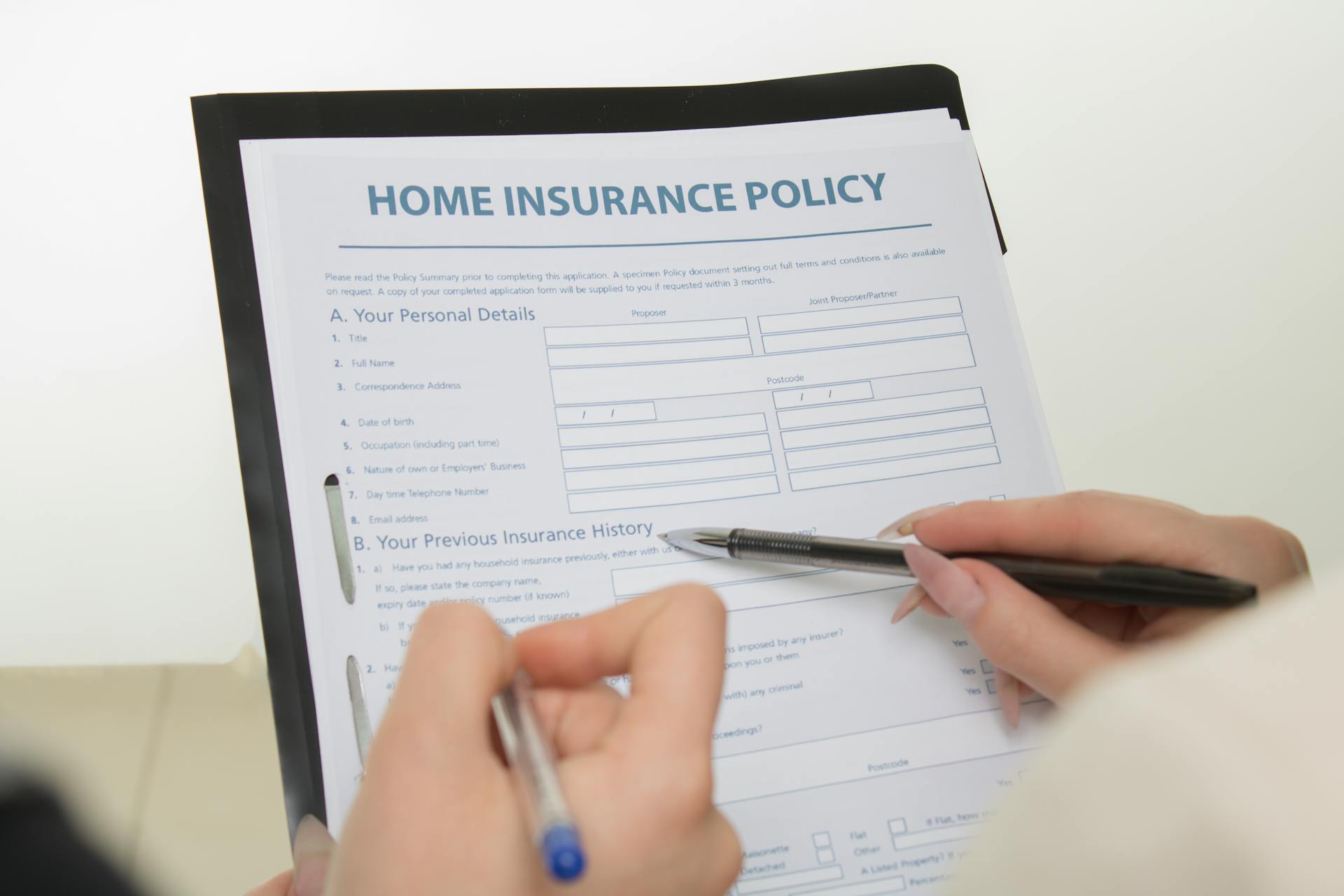
Homeowners insurance policies typically don't cover damage caused by smaller wild animals like squirrels, raccoons, rodents, bats, and woodpeckers. This is because the damage they cause happens slowly over time, which is considered an infestation.
Wild animals like deer and bears, however, can cause sudden and unexpected damage that may be covered by structural coverage in a homeowners insurance policy.
Damage caused by wild animals can be a real concern for homeowners, especially if it's not covered by their insurance policy.
Related reading: Does Homeowners Insurance Cover Damage Caused by a Contractor
How It Works
Filing a claim is a necessary step after your home is destroyed, and you'll need to document the damage to receive a payout.
Your payout could vary depending on your coverage and deductibles, so it's essential to understand your policy.
Homeowners insurance isn't required by law, but most lenders will insist on it if you have a mortgage to protect their investment.
The average cost of homeowners insurance in the U.S. is $1,915 per year, which can vary depending on your location and coverage.
Bundling home and auto insurance can lead to a discount, and having common safety features like burglar alarms and deadbolt locks can also lower your rate.
Do You Have the Right?
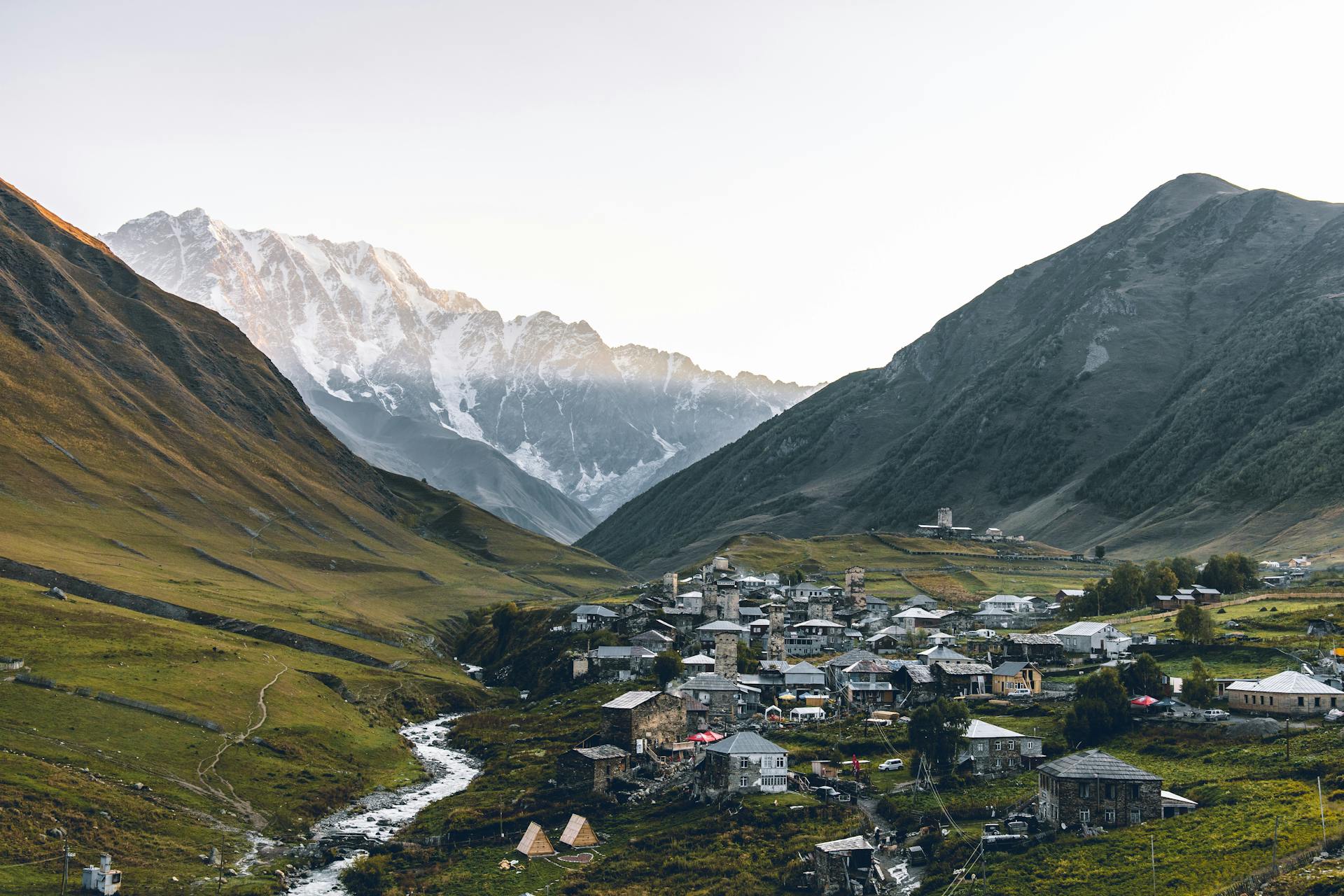
Having the right home insurance coverage can make all the difference in protecting your home and financial well-being.
At Matic, they want to make buying homeowners insurance as straightforward and easy as possible, including ensuring you have the right types and amounts of coverage.
Answering a few questions can provide you with a personalized quote in seconds, making the process quick and hassle-free.
Knowing what to look for in a policy is crucial, and Matic's approach is a great example of how to make insurance shopping a breeze.
Surprising Policy Inclusions
Most home insurance policies include a few additional coverage types at no extra cost to you. These inclusions can be a pleasant surprise when you're dealing with a claim.
Debris removal is usually included, which helps with the cost of removing debris if caused by a covered peril. The limit for tree debris removal is up to $1,000 per occurrence and $500 per tree.
Consider reading: Does Homeowners Insurance Cover Tree Falling on Fence
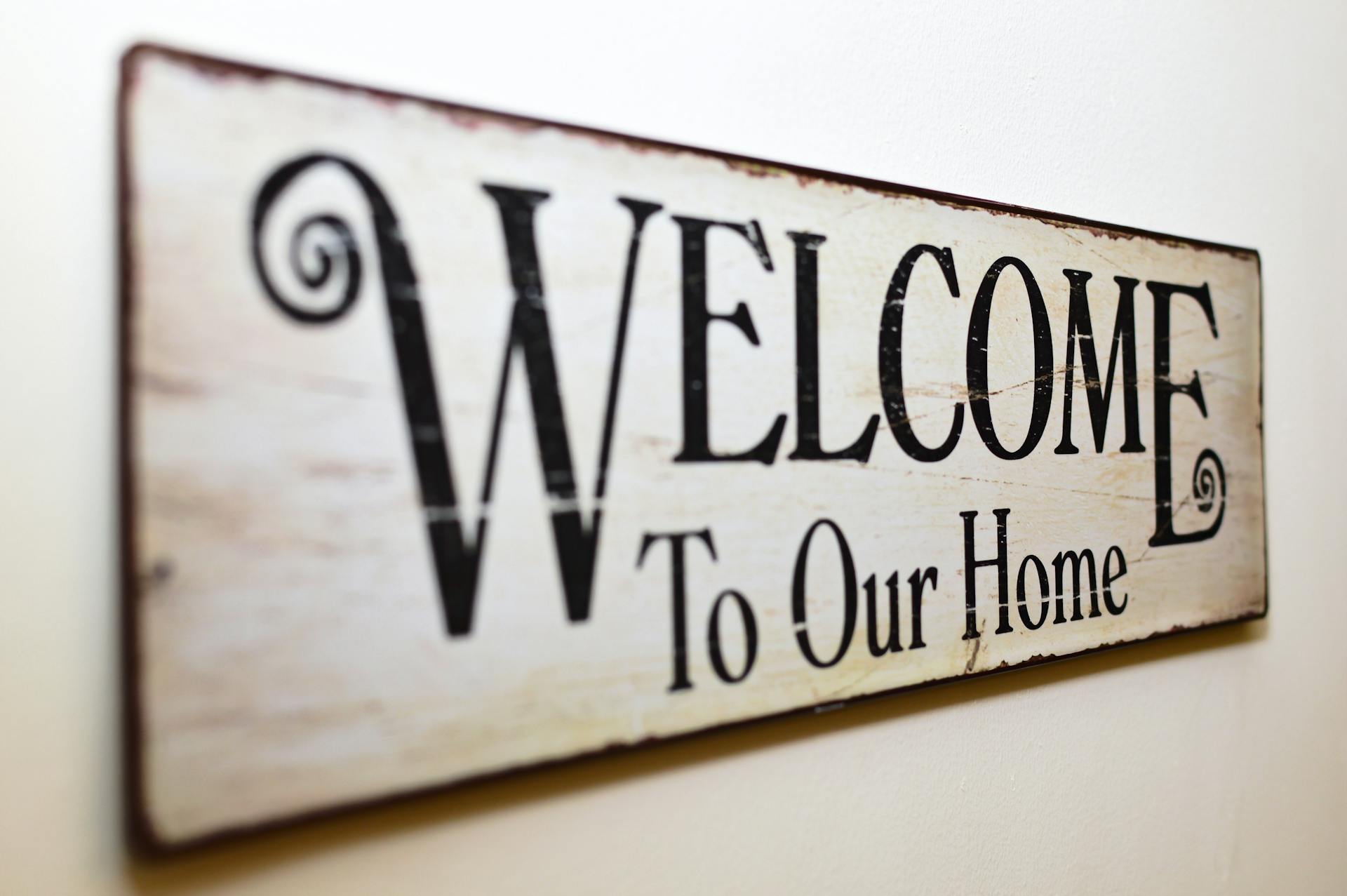
Reasonable repairs are also included, which helps with repair costs incurred by the policyholder to prevent further loss, like a tarp or boards to cover a broken window. The limit depends on your policy.
You might be surprised to learn that tree, shrubs, and other plants are included in some policies. This helps with the costs of replacing them if they're damaged by a covered loss like fire or vandalism. The limit is 5% of the total dwelling limit, or up to $500 per plant.
Some policies also include no-deductible coverage for fire department service charges, up to $500. This can be a big help if you need to call the fire department in an emergency.
Here's a breakdown of some of the other surprising inclusions:
What Is Not Covered
Homeowners insurance is designed to protect you from unexpected events, but it's essential to know what's not covered.
Some common coverage exclusions include dogs and pet liabilities, unless you have specific coverage for them. Normal wear and tear is also not covered by standard homeowner's insurance policies.
For another approach, see: Why Is Anucort-hc Not Covered by Insurance?
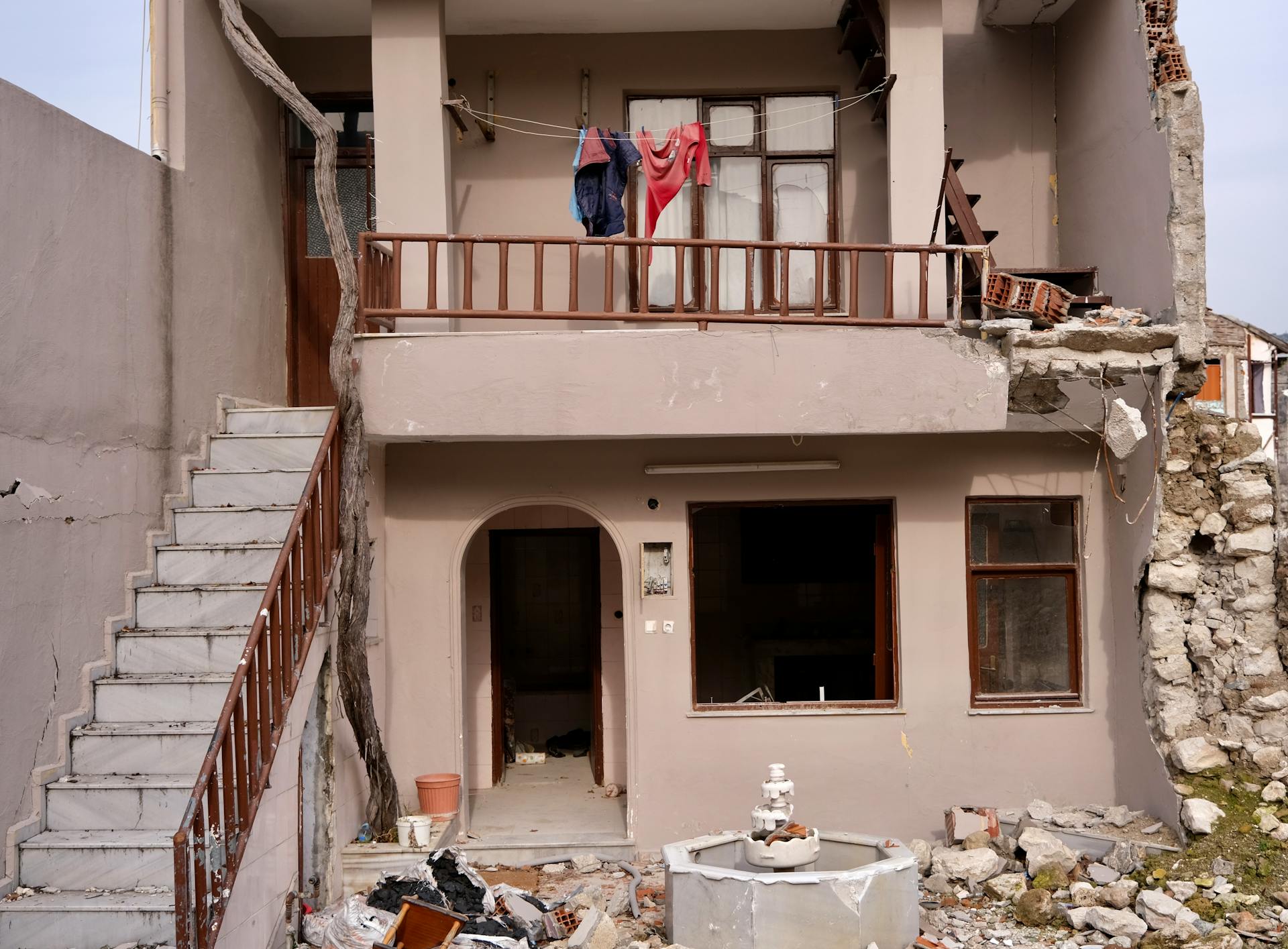
Intentional loss and neglect are not covered, so if you intentionally damage your home or neglect to maintain it, you won't be reimbursed.
Home-based businesses are not typically covered by standard homeowner's insurance policies.
Earthquakes, earth movement, and power surges caused by utility companies are also excluded from standard policies.
Floods and sewer backups are usually not covered, unless you have a separate flood insurance policy.
Pest infestations, mold, and wet rot are not typically covered by standard homeowner's insurance.
Local building codes and government actions are also excluded from standard policies.
Acts of war, nuclear hazards, and normal wear and tear are not covered by standard homeowner's insurance policies.
Here is a list of common coverage exclusions:
- Dogs & Pet Liabilities (It Depends)
- Normal Wear and Tear
- Intentional Loss & Neglect
- Home-Based Businesses
- Earthquakes & Earth Movement
- Power Surges (Caused by Utility Companies)
- Floods & Sewer Backups
- Pest Infestations
- Mold & Wet Rot
- Local Building
- Government Action
- Acts of War
- Nuclear Hazards
Additional Living Expenses and Liability
Additional living expenses can be a significant burden when your home is uninhabitable due to damage. Your homeowners insurance policy may cover these expenses, specifically through Coverage D, which pays for the additional costs of living somewhere else while your home is repaired or rebuilt.
This coverage can include hotel and restaurant expenses, laundromat fees, pet boarding, and other costs you may incur during that time. The financial limits for this coverage usually range between 20 and 30 percent of Coverage A.
If you're unsure about your coverage limits, it's essential to review your policy to understand what's included and what's excluded. For example, if your home is damaged during a war, Coverage D would not be available because war is typically excluded from homeowners insurance policies.
Here are some examples of what may be covered under loss of use coverage:
- Hotel stays
- Restaurant meals
- Laundromat fees
- Pet boarding
Liability coverage, on the other hand, can help protect you against a wide range of common accidents, including dog bites, slips on icy walkways, and falls due to a lack of railing. This coverage can help pay for medical bills and legal fees if someone is injured on your property.
Liability
Liability coverage is a crucial part of homeowners insurance that protects you from financial losses resulting from damage to others' property and personal injury to others if you are found legally responsible.
Liability insurance typically covers court awards and expenses, with standard limits ranging from $100,000 to $500,000.
If you're found liable for an accident, liability insurance can help cover the costs of medical bills and legal fees related to the incident.
Liability insurance can also cover damage caused by your family members and pets, unless they are excluded from the policy.
You can have peace of mind knowing that liability insurance has got your back in case of unexpected accidents or injuries on your property.
If you think you need more liability insurance than the average homeowners policy offers, consider an umbrella liability policy, which provides broader coverage and higher liability limits.
Here are some common accidents that liability insurance can help cover:
- Trips and falls on a broken walkway
- Falls due to a lack of railing
- Slips on an unsalted, icy walkway
- Dog bites (in some cases)
Additional Living Expenses
Additional Living Expenses can be a lifesaver if your home is damaged and you need to live elsewhere temporarily. This coverage pays for the costs of living somewhere else while your home is being repaired or rebuilt.
The coverage pays for hotel and restaurant expenses, laundromat fees, pet boarding, and other costs you may incur during that time. Your Coverage D limit is usually between 20 and 30 percent of Coverage A.
You'll need to have a covered claim for the damage to be eligible for this coverage. If the damage is from a disaster that isn't covered, such as a flood, your insurer won't pay your additional living expenses.
You'll typically need to exceed your normal expenses for food, housing, and transportation to qualify for this coverage. For example, if your family normally spends $1,000 per month on food, but you're now spending $1,500 per month on food while living elsewhere, you may be eligible for coverage.
This coverage can pay for hotel stays, restaurant meals, or other expenses associated with living somewhere else if your home is uninhabitable after a disaster your policy covers.
Damage and Losses
Damage to your home's structure is typically covered by standard homeowners insurance policies, including damage to windows, roof, ceiling, walls, flooring, foundation, and more. This coverage applies to damage caused by a covered event, such as a storm.
Wind damage, including damage from thunderstorms, hailstorms, hurricanes, tornadoes, and other types of storms, is also covered by most standard policies. However, some policies may exclude wind damage, especially in regions prone to strong windstorms.
If your home is damaged by a hurricane, wind damage and damage from projectile objects are typically covered, unless explicitly excluded from your policy. However, flood damage and sewage backup caused by a hurricane are usually not covered.
A standard homeowner's policy may cover the following types of damage:
- Fire & Lightning
- Windstorm & Hail
- Explosion
- Riot or Civil Commotion
- Non-Owned Vehicles or Aircraft Damage
- Smoke
- Vandalism
- Theft (Limited)
- Glass Breakage
- Weight of Ice, Sleet, and Snow
- Collapse of Building (Not Settling Damage)
- Freezing of Plumbing or Heating System
- Accidental Leakage of Plumbing or Heating System
Loss
Loss can be a devastating experience, especially when it comes to your home. Structural damage from a covered event, such as a storm or fire, can be covered by your homeowners insurance policy.
Some types of damage are not covered, however, such as damage caused by a non-covered event, lack of maintenance, or general wear and tear. This includes damage to your home's foundation, walls, flooring, and more.
Wind damage caused by storms is a common type of claim submitted to insurance companies, and it's typically covered by most standard homeowners insurance policies. However, some policies may specifically exclude wind damage, especially in regions prone to strong windstorms.
Flooding caused by a hurricane or storm is not covered by standard homeowners insurance policies, but you can purchase flood insurance as a separate policy. It's essential to review your policy to understand what's covered and what's not.
If your home is damaged by a tornado, wind, or hail, you may be covered, but flooding caused by a tornado is not typically covered. It's crucial to take steps to prepare your home against tornado damage.
Wildfires can be devastating, and whether or not your homeowners insurance policy covers damage caused by wildfires depends on the terms of your policy and your carrier. Some carriers may exclude wildfire damage or increase premiums due to the increased risk.
If your home is damaged by a burst pipe, water damage caused by a sudden and accidental discharge is typically covered by your policy. However, water damage caused by a sewer backup, improper installation of an appliance, or lack of maintenance is not covered.
Recommended read: Does Homeowners Insurance Cover Wildfires
In some cases, you may be eligible for loss of use coverage, also known as additional living expenses, if your home is too damaged to live in. This coverage can pay for hotel stays, restaurant meals, and other expenses associated with living somewhere else while your home is being repaired.
Here's a summary of what's covered and what's not:
Remember, it's essential to review your policy and understand what's covered and what's not to ensure you're adequately protected against losses.
Earthquake Damage
Earthquake damage can be devastating, and it's essential to know that it's not typically covered by a standard homeowners policy.
Damage caused by earthquakes is usually not included in standard insurance policies, so you may need to purchase a separate policy or endorsement.
Living near an active fault line can increase the risk of earthquake damage, making earthquake insurance a consideration worth exploring.
Protection and Prevention
Protection and Prevention is a crucial aspect of homeowners insurance. You can purchase riders to increase your coverage limits beyond what is included in your base policy.
Some common types of riders include flood insurance, earthquake insurance, and water backup coverage. These can provide additional protection against specific risks or perils.
Flood insurance is a must-have for homes in flood-prone areas. It can help you repair or rebuild your home if it's damaged by flooding.
Earthquake insurance can provide financial protection against earthquake damage. This is especially important for homes in earthquake-prone areas.
Water backup coverage can help you pay for repairs if your home's sewer or drain system backs up and causes damage.
Here are some common types of homeowners insurance riders:
- Flood insurance
- Earthquake insurance
- Water backup coverage
- Building code coverage
- Scheduled personal property
- Business property coverage
- Identity theft coverage
Key Concepts and Takeaways
Most mortgage lenders require homeowners to purchase home insurance. This is a standard requirement for many lenders, so it's essential to understand what's covered.
Standard HO-3 home insurance policies cover damage to your home's structure, other structures on your property, and your personal belongings. They also cover your liability as a homeowner and the cost for things like food and a hotel if you're displaced after a covered loss.
Some significant causes of damage, such as earthquakes and flooding, are excluded from standard policies. This is something to consider when purchasing a policy, especially if you live in an area prone to these types of disasters.
Home insurance policies cover a range of potential losses, but it's essential to understand what's not covered. By knowing what's included and excluded, you can buy the right policy the first time around.
Here are some key takeaways to keep in mind:
- Most mortgage lenders require homeowners to purchase home insurance.
- Standard HO-3 policies cover damage to your home's structure, other structures, and personal belongings.
- Standard policies also cover liability and additional living expenses.
- Some significant causes of damage, such as earthquakes and flooding, are excluded from standard policies.
Frequently Asked Questions
What does full house insurance cover?
A standard homeowners insurance policy typically covers four key areas: your home's dwelling, other structures on the property, your personal belongings, and liability in case of accidents or damage caused to others. This comprehensive coverage helps protect you from unexpected events and financial losses.
What does property insurance pay off?
Property insurance helps pay for rebuilding or replacing your home after damage from events like fires, lightning, and windstorms. It can also cover costs associated with repairing or replacing damaged property.
Sources
- https://www.towneinsurance.com/personal/personal/property/home/parts/
- https://www.nerdwallet.com/article/insurance/understanding-homeowners-insurance
- https://matic.com/what-does-homeowners-insurance-cover/
- https://www.bankrate.com/insurance/homeowners-insurance/what-does-homeowners-insurance-cover/
- https://www.iruhl.com/blog/what-does-standard-homeowners-insurance-cover-and-not-cover/
Featured Images: pexels.com

